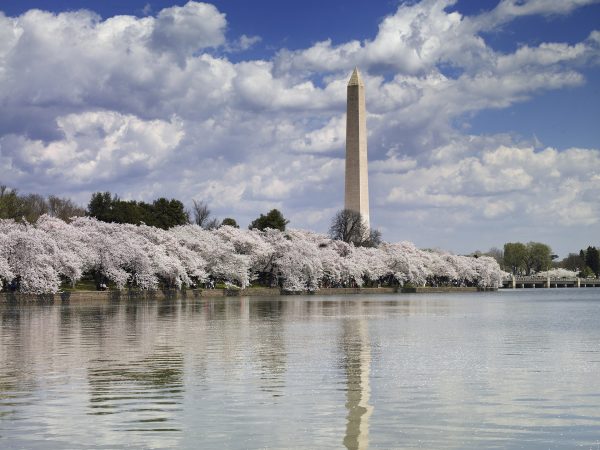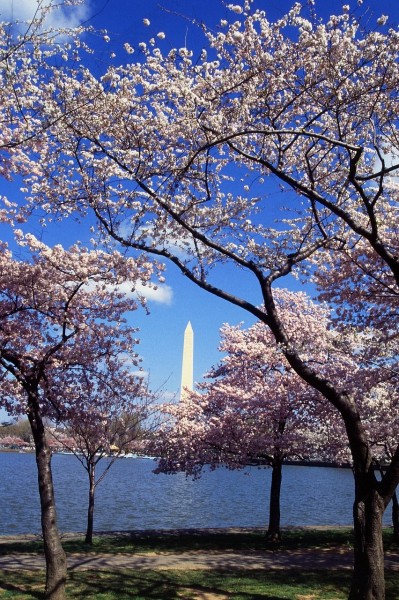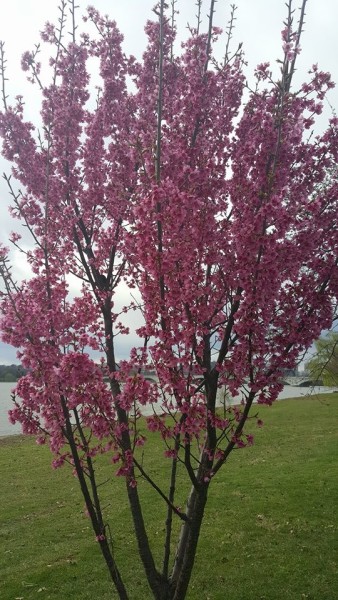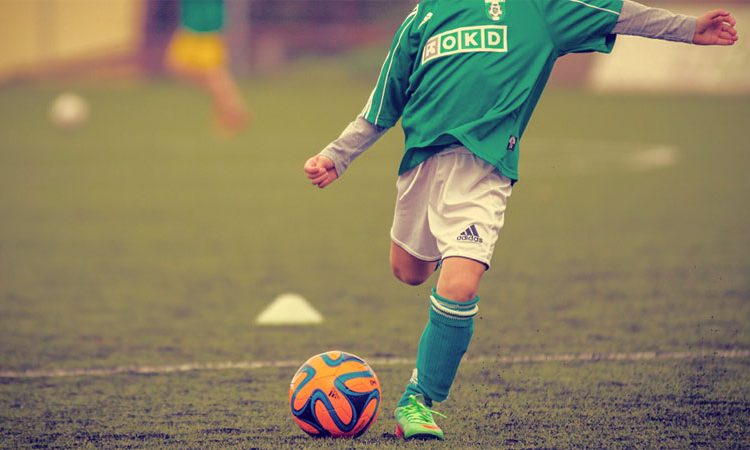Travel | Enjoying Cherry Blossom Time in Washington D.C.
By Shandle Blaha
Peak bloom has finally arrived in Washington D.C.! Bloom Watch 2016 predicts that the cherry blossoms will peak March 23 and 24 in our nation’s capital. Blossom time is my favorite time of year in D.C. It’s as if the city has transformed into a life sized pop-up book of The Lorax with pink and white Truffula trees lining the National Mall, in stark contrast to large, serious-looking marble buildings and monuments.
The Yoshino cherry trees were a gift given to the city in 1912 from Mayor Yukio Ozaki of Tokyo as a gesture of goodwill and friendship between the United States and Japan. There are now more than 3,000 trees of several varieties that have a special crew of the National Park Service to oversee their year-round care. During the peak bloom times, the city celebrates with The National Cherry Blossom Festival with a long list of activities throughout D.C. and its surrounding suburbs. Highlights include the opening ceremony, a parade, Blossom Kite Festival, Sakura Matsuri-Japanese Street Festival, a 10-mile run, and a fireworks show, in addition to hundreds of other cultural activities.
Here’s a timeline of the beautiful trees and historic festivals:
- In 1885, Eliza Ruhamah Scidmore returned from Japan with the idea to bring the trees to the city and plant them along the waterfront.
- In 1906, David Fairchild imported 1,000 cherry trees and planted them on his own property. This led them to promoting the idea to plant the trees around the city.
- On Arbor Day in 1908, Fairchild donated a cherry sapling to every Washington D.C. school.
- Scidmore decided to raise the money to buy cherry trees and donate them to the District in 1909.
- The first batch of 2,000 trees arrived in 1910 but were diseased and had to be burned.
- In February 1912, some 3,020 trees were shipped from Tokyo onboard the Awa Maru.
- March 26, 1912, the trees arrived in D.C. on a railcar from Seattle.
- First Lady Helen Herron Taft and Viscountess Chinda, wife of the Japanese ambassador, planted the first two trees.
- In 1915 the United States reciprocated by giving Japan flowering dogwood trees.
- The first festival was held in 1927.
- In 1938 plans to cut down some of the trees for the Jefferson Memorial were met with protests.
- On December 11, 1941, four trees were cut down in suspected retaliation for the attack on Pearl Harbor.
- The festival was suspended during World War II and resumed in 1947.
- In 1965, Lady Bird Johnson, First Lady, accepted 3,800 Yoshino trees from the government of Japan and held a tree-planting reenactment.
- In 1981 Japan was giving cuttings from the D.C. trees after a flood destroyed many of theirs.
- In 1994 the festival ran for two weeks due to a diverse blooming schedule.
- In 1997 scientists took cuttings from the original trees to propagate new ones.
- First Lady Hillary Clinton planted a tree named “Dream Catcher” in 1999.
- In 2012, in honor of the 100-year anniversary, there was a five-week-long celebration.
Fun Facts:
- Current First Lady Michelle Obama has planted a tree; historically, first ladies are very involved with festival.
- More than 1 million people visit during the festival.
- The lantern lit during the festival is 360 years old and was a gift from Japan to commemorate the 1854 signing of the Japan-US Treaty of Amity and Friendship.
- The Japanese Street Festival is the largest Japanese Cultural festival held in the United States.
- There are 12 to 15 varieties of cherry trees in bloom during the festival including Yoshino and Kwanzan, the two most common.
- The Yoshino trees are the ones that give that fluffy cloud effect around the Tidal Basin.
- The first two trees planted in 1912 still stand today.
- There are four types of cherry tree structures: round-topped, weeping, V-shaped and flat-topped.
- The indicator tree blooms 10 days before the others; a sign that peak bloom is on its way.
- The natural life of the cherry tree is 20-50 years. To preserve the genetic heritage of the original trees, scientists took cuttings to grow more genetically identical trees.
- Scientists have developed new varieties of the trees, including one called “First Lady.”

















Leave a Reply